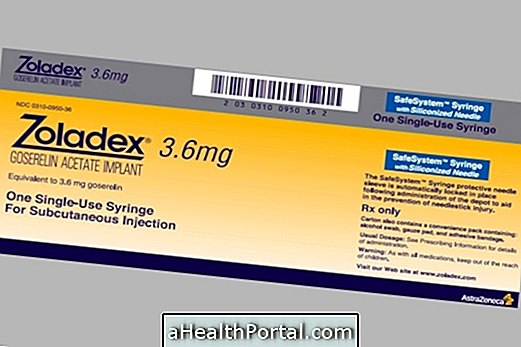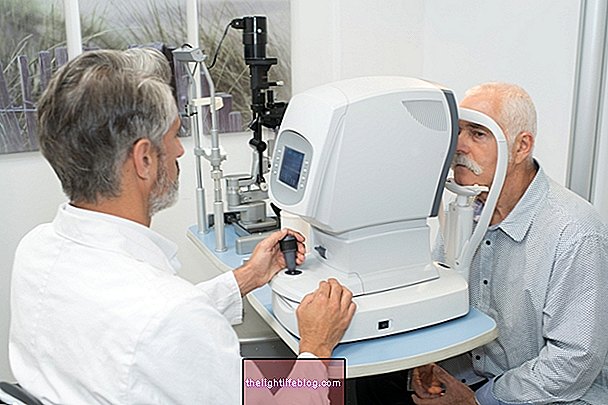The short congenital femur is a malformation characterized by the decrease in size or absence of the femur, which is the thigh bone and the largest bone in the body.
This change can be discovered on the ultrasound in the 2nd or 3rd trimester of gestation and may indicate the presence of any disease such as Down syndrome, dwarfism or achondroplasia, for example, or may only indicate that the baby has shortened or absent femur, not having no other health problem.
How is the diagnosis made?
- During the pregnancy:
The doctor may find that the baby has a short congenital femur through the ultrasound performed during the prenatal period, where the femur size is measured. The ideal length of the femur during gestation should be approximately:
- 24 weeks gestation: 42 mm
- 26 weeks gestation: 48 mm
- 28 weeks of gestation: 53 mm
- 30 weeks gestation: 58 mm
- 32 weeks gestation: 60 mm
- 34 weeks of gestation: 65 mm
- 36 weeks gestation: 69 mm
- 38 weeks of gestation: 72 mm
- 40 weeks gestation: 74 mm
These measures are approximate and so the baby may be growing within the expected if they present values lower than those indicated here and therefore who should indicate if the baby has a short femur is the doctor who is accompanying the pregnancy.
Many times a small change is found at the end of gestation, but also must be taken into consideration the height of the parents and also of the family because if the parents are not very tall, your baby should not be too and this does not indicate any health problem .
- After birth:
In some cases the obstetrician does not observe any significant changes during pregnancy, but the pediatrician may find that the baby has some change in the length of the femur or in the fitting of that bone in the hip when performing some tests in the first 3 days in which the baby stays in the hospital after birth.
Find out what are the tests performed in the maternity ward and the possible changes that the pediatrician can find in: What is Congenital Hip Dysplasia, a condition where the femur is smaller than it should or there are changes in the hip joint.
Classification of the congenital short femur
After identifying that the femur is smaller than it should the doctor should also observe what type of change the baby has, which can be:

The red part of the image indicates the part of the bone that is smaller or absent and therefore indicates:
- Type A: A small part of the femur under the head of the femur is deficient or absent;
- Type B: The head of the femur is attached to the lower part of the bone;
- Type C: The head of the femur and the acetabulum, which is the place of attachment in the hip is also affected;
- Type D: Most of the femur, acetabulum and part of the hip are absent.
Treatment of congenital short femur
The treatment of the short congenital femur is quite time consuming and aims to improve the quality of life of the baby. When the femoral shortening is up to 2cm in adult life, the doctor may decide not to perform any specific treatment, but when the shortening is greater than 5cm, treatments and surgeries must be performed should be started in infancy.
The doctor can know the length of the femur that the child will have in adult life using the Paley multiplier method and according to the result may indicate the following treatments:
- For shortening up to 2 cm in adult:
When the femur shortening is up to 2cm the treatment may be compensation in the footwear of the difference between the legs, through the use of insoles or elevation in the sole of the footwear to avoid that a scoliosis develops and that there is pain in the back or other compensations in the muscles and joints.
- For shortening between 2 and 5 cm in adult:
When femoral shortening is between 2 and 5 cm, surgery can be performed to cut the healthy leg bone so that it is the same size, perform surgery for femoral or tibial stretching, and while waiting for the ideal time of surgery, one can use only compensation with proper footwear or leg prosthesis.
- For shortening more than 20 cm in adult:
When shortening is greater than 20 cm, which is nearly half the normal size in adult life, it may be necessary to amputate the leg and use a prosthesis or crutches for life. In that case, surgery is the most effective treatment and aims to add prostheses to the bone so that the person continues walking normally. The surgery should preferably be performed before the age of 3 years.
In any case, physical therapy is always indicated to reduce pain, to facilitate the development and to avoid muscular compensations or to prepare for surgery, for example, but each case must be analyzed in person because the physiotherapeutic treatment will be different for each person because the needs of one can not the other's.
What causes congenital short femur
The congenital short femur develops during pregnancy and can be caused by infections caused by viruses, drug use during pregnancy, exposure to radiation, or taking some medications such as thalidomide, for example, but not always the causes can be clarified.
























